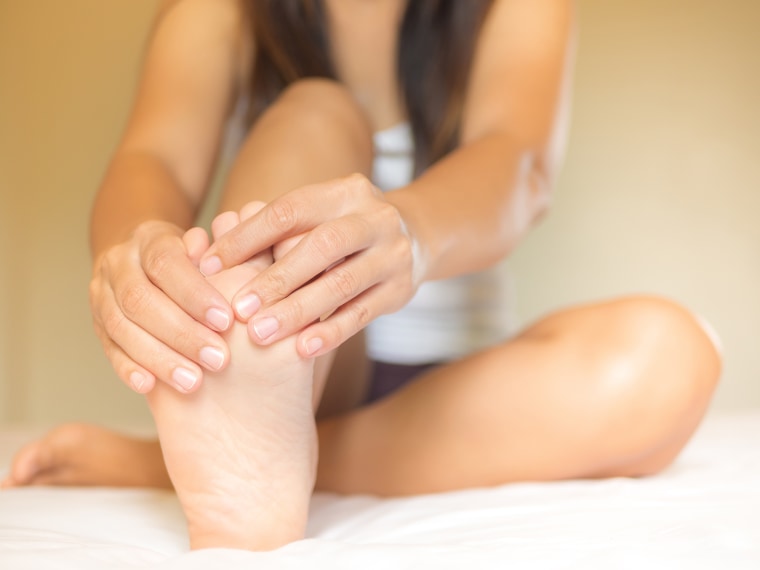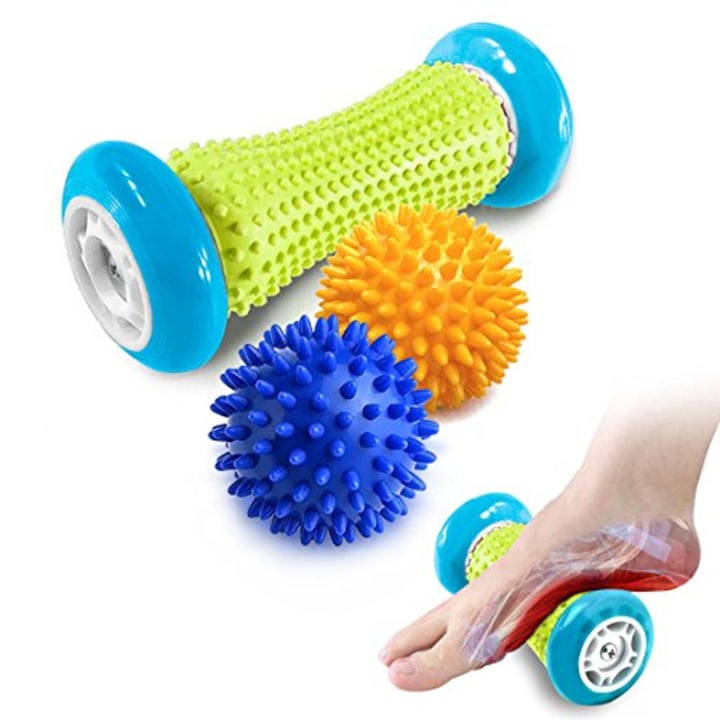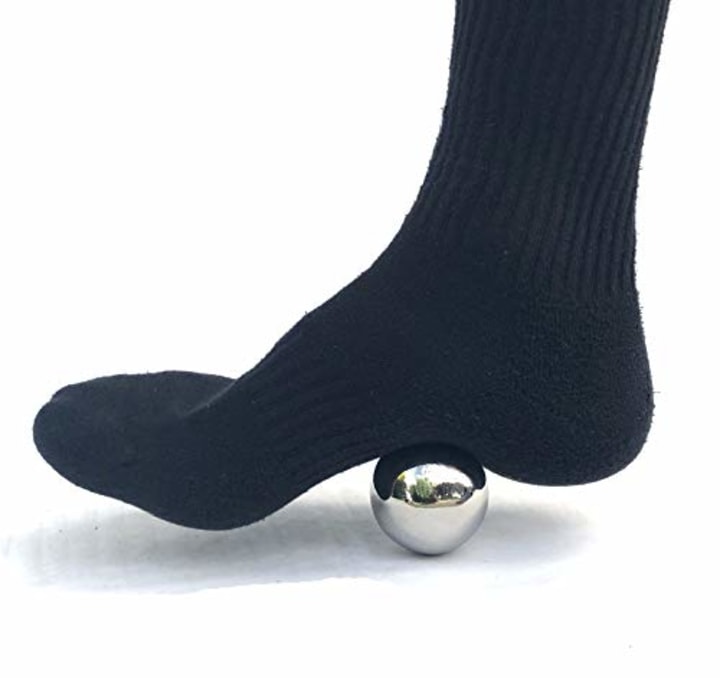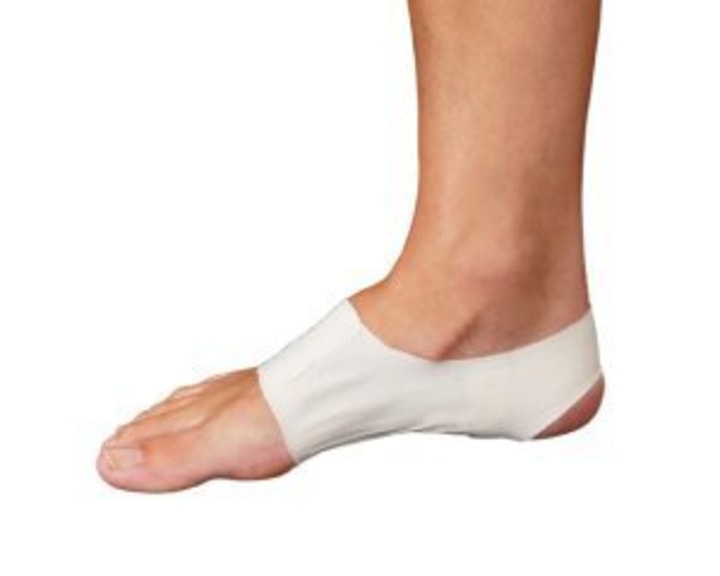Those who have suffered from plantar fasciitis — the inflammation of the ligament that runs along the bottom of your foot — know that the stabbing pain can be debilitating, often keeping you sidelined from your favorite activities.
“Plantar fasciitis seems to have recently reached epidemic proportions,” says Dr. Doug Tumen, a board-certified podiatrist and author of "Ask the Foot Doctor". “Because the average person takes at least 5000-7000 steps per day, and because we live in a world of concrete and hard surfaces, our feet are continually taking a significant impact and load on a daily basis.”
“Although previously considered a common sports injury, affecting professional athletes including both Eli and Peyton Manning, presently it seems as if no one is spared from the pain of plantar fasciitis,” he adds.
According to the American Academy of Orthopaedic Surgeons (AAOS), two million patients are treated for this condition every year. As a fitness professional and a recreational tennis player, I’ve suffered from plantar fasciitis myself. At one point, I felt like I was walking on pins and I couldn’t fall asleep because the pain would creep from my feet, up into my Achilles tendon, and through my calves.
If you, too, are feeling the pain, here’s everything you need to know about reducing inflammation and getting back on your feet.
What does plantar fasciitis feel like?
“Plantar fasciitis usually starts as pain on the bottom of the foot by the heel bone,” says Tumen, adding that the pain is most often felt when getting out of bed in the morning or any time after sitting for a prolonged period and starting to walk. “It can often ease after being on the foot for a while and then the pain returns again with increased activity,” he says.
Tumen explains that the plantar fascia is a band of supportive tissue on the bottom of the foot that supports four layers of muscles, extending from the heel bone to the forefoot. “The pain usually begins directly where the plantar fascia attaches to the heel bone,” he says. But since the band supports the arch of your foot, as it becomes irritated and inflamed, the pain can spread along the bottom of the foot. Sometimes this can even lead to micro tears of the fibers of the plantar fascia.
While there is no one cause of plantar fasciitis, we do know that some things can exacerbate it. Tumen says that repetitive stress, weight gain, improper shoes, exercise and sporting activities (especially repetitive motions or new activity), along with natural tightening of our muscles and tendons over time, can all contribute to developing plantar fasciitis.
What to do to relieve plantar fasciitis pain
Luckily, most cases of plantar fasciitis will heal by itself over time with treatments like resting and icing. And there are some steps you can take to reduce the pain duration the healing process. Supportive taping and strapping can protect the foot from aggravating the plantar fasciitis even further — and orthotics can be especially helpful to wear at night to keep the foot in a flexed position and reduce pain in the morning. If there is pain with activity, consider cross-training or performing other activities that don't aggravate the plantar fasciitis. Post-workout massage helps to speed recovery and provides some pain relief, while icing helps to reduce any inflammation.
Tumen suggests massaging the foot, icing it and rolling it with a frozen water bottle or ice pack. He suggests massaging and rolling out the foot prior to exercise, too. "Rolling and massage help for many reasons: Breaking up adhesions, stimulating circulation, and stretching a tight plantar fascia are all benefits of giving the area localized attention," says Tumen. "Four layers of muscles also sit just above the fascial in the foot and the massage and rolling also helps to relieve tension through these muscle layers."
"A plantar fascial night splint, strappings, orthotics and other forms of physical therapy can help resolve discomfort," he adds. Here are some tools that can help:
Foot Roller
Cold Massage Ball
Night brace
Foot Support straps
Kinesiology Tape
When should you see a doctor?
Tumen recommends having a professional evaluation of your foot if the pain does not resolve in 1 or 2 weeks. Icing and stretching should be done consistently, as should wearing supportive shoes, but if the pain continues it is best to have an X-ray and possibly an ultrasound evaluation. “There are many causes of foot pain including stress fractures, plantar fascial tear, nerve impingements and bursitis, and a foot specialist can help to differentiate your particular challenge and offer the treatment needed to alleviate pain and get you back to normal activities,” he advises.
How do you treat plantar fasciitis?
“Thankfully, most cases of plantar fasciitis can resolve with conservative treatment by your foot care specialist,” says Tumen. “Surgery is rarely needed and is reserved for recalcitrant cases of foot pain not responsive to the standard treatments available.”
According to Tumen, typical early treatments of the condition include anti-inflammatories and NSAIDs like aspirin and ibuprofen, or cortisone injection or topical anti-inflammatories. Newer treatment such as radial pulse therapy and extracorporeal shockwave therapy offer noninvasive, state-of-the-art cures for painful plantar fasciitis.”
But the treatment that has the potential to provide the most immediate relief is also the easiest: stretching. Stretching your calf muscles is one of the more effective treatments, says Tumen. "Prevention is the best cure. Anyone who has suffered the pain of plantar fasciitis wishes they could have prevented it. Stretching is one of the easiest and best ways to [do this]," he says. "Those that regularly do stretching exercises are less likely to develop plantar fasciitis. If someone has had [it] this is also the best way to prevent a re-occurrence.”
Try these stretches to help relieve plantar fasciitis pain
According to the AAOS, “plantar fasciitis is aggravated by tight muscles in your feet and calves. Stretching your calves and plantar fascia is the most effective way to relieve the pain that comes with this condition.” Studies even show that plantar fascia-stretching exercises can be more effective than low dose shock wave therapy in the acute phase of plantar fasciitis.
These stretches are great to perform regularly, especially before and after exercise, to help stretch the calf and the bottom of the foot, which won't only relieve pain once it creeps up, but can prevent it altogether.
Wall Stretch
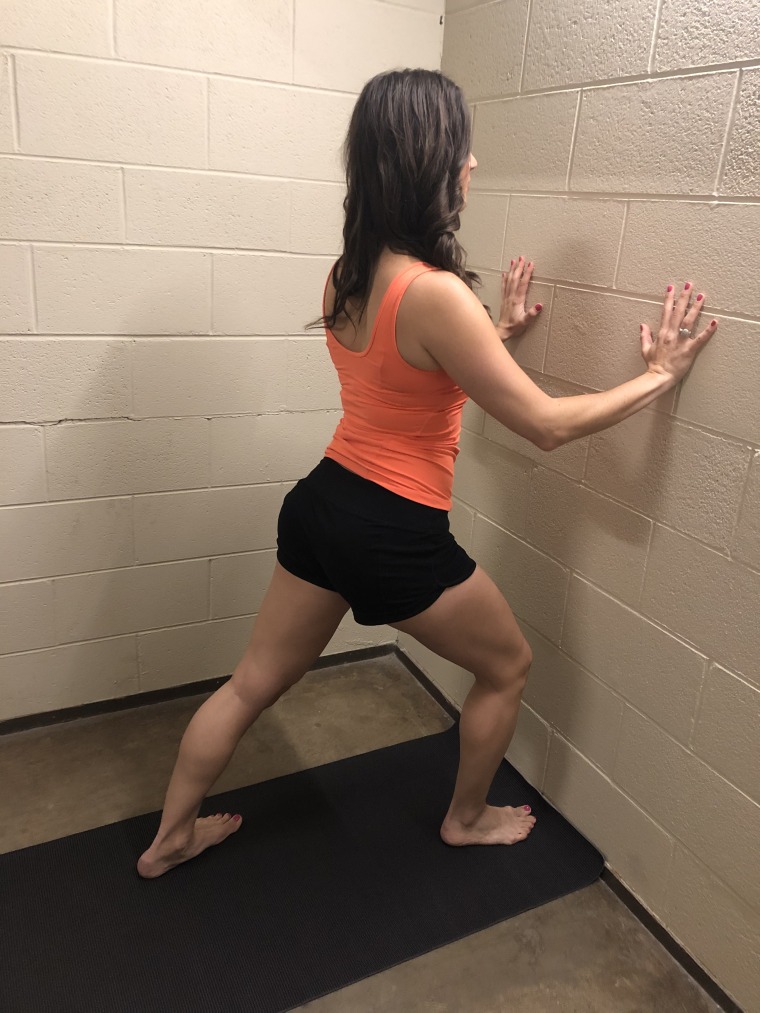
The runner’s wall stretch is a great way to stretch and elongate the muscles in the back of your leg. Stand with your right toe close to the wall with the knee slightly bent. Step your left foot back wider than your hips and straighten the leg. Press down through the left heel and feel a stretch on the back of the leg, through the calf. Hold for a few breaths, and then switch legs.
Stair Stretch
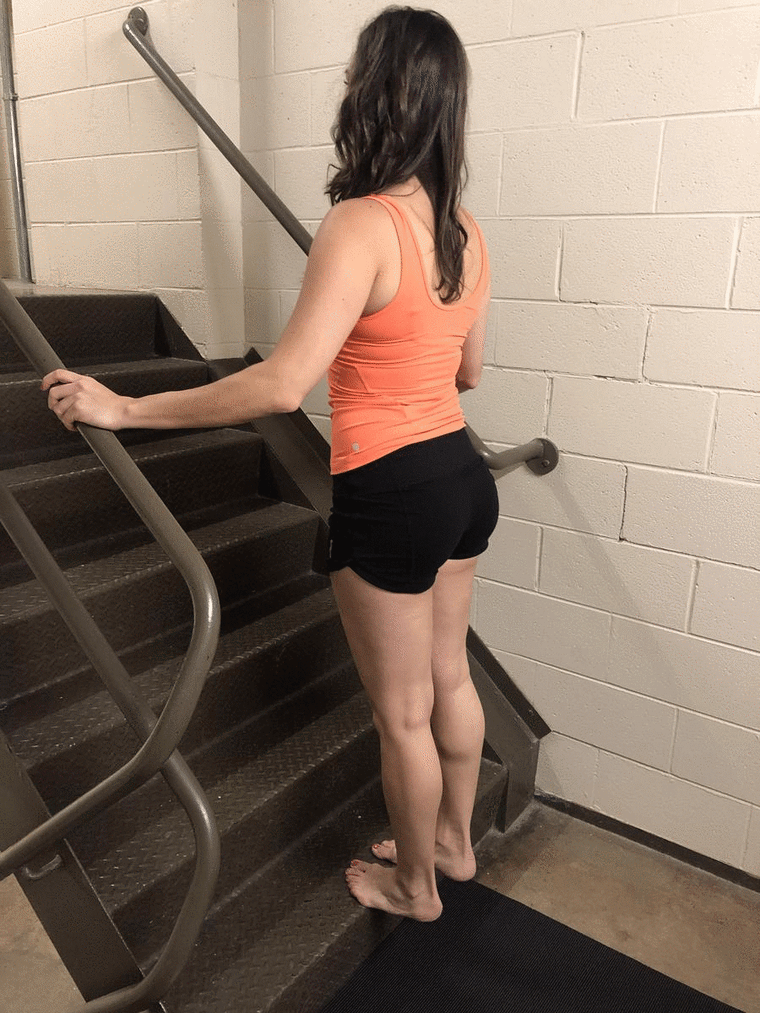
Another stretch that Tumen recommends is the stair stretch. Stand on a stair with your heel hanging off the back of the step. Gently flex your feet, allowing the heels to dip down towards the stair below. Feel a stretch in the calves and hold for a few breaths. (You can perform one leg at a time or both legs at once.)
Supported Standing Calf Stretch with a Strap
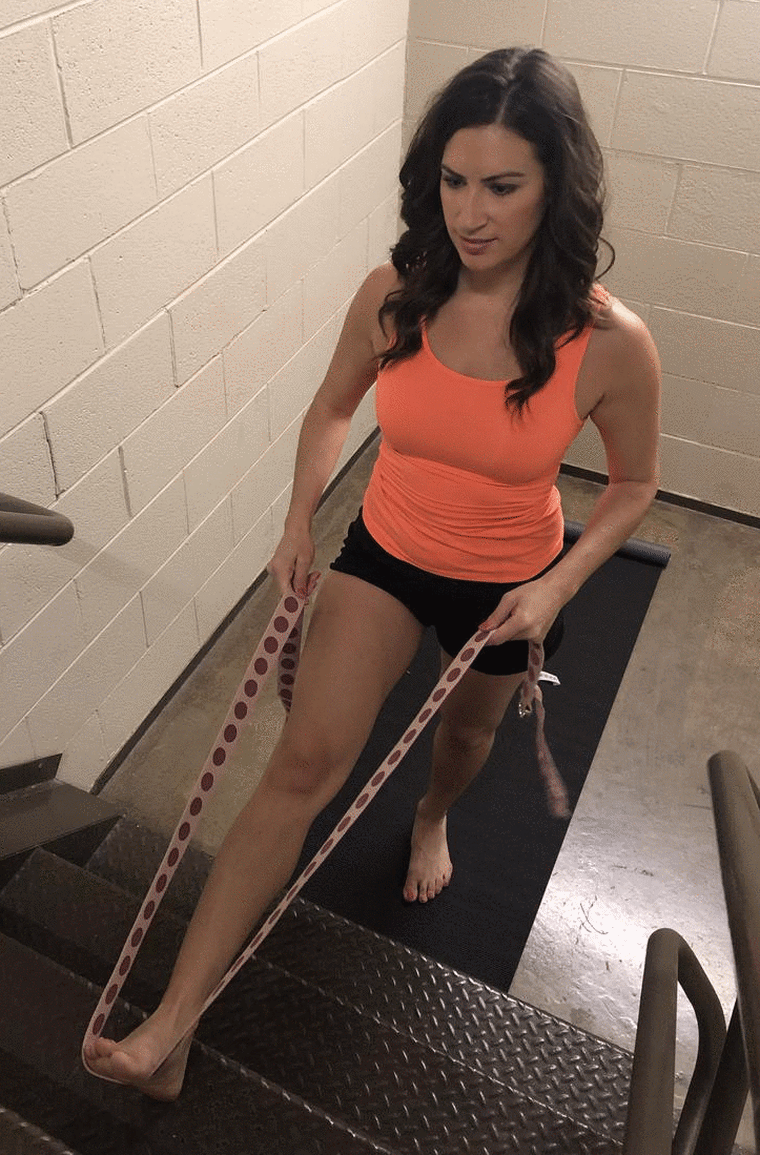
A standing stretch for the back of the legs is usually felt in the tightest area. So if your hamstrings are also tight, the stretch may bypass your calves and go straight there. That’s why we perform this stretch with one leg up on a step and a strap around your foot. Stand up tall, place one leg up about 3 steps height (or on a chair or other raised surface) and flex your foot. Wrap the strap around the ball of your foot and use it to pull the top of your foot and toes back to feel a stretch in your foot and calf. Hold for a few breaths, and then switch legs.
Modified Broken Toe Pose
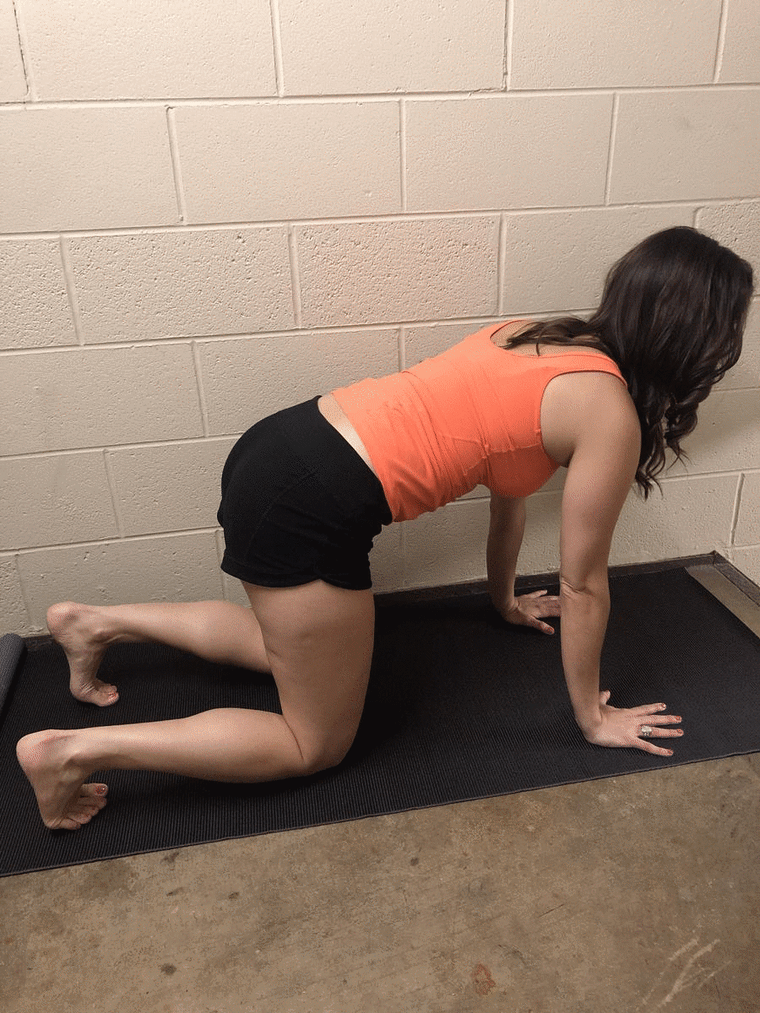
Start on your hands and knees. Tuck your toes under so that your feet are flexed. Gently press back as far as is tolerable to stretch the backs of the toes and the feet. If possible, you can press all the way up so that your hips are over your heels — this is called broken toe pose in yoga. Hold for a few breaths, and then release.
Toe Towel Curl
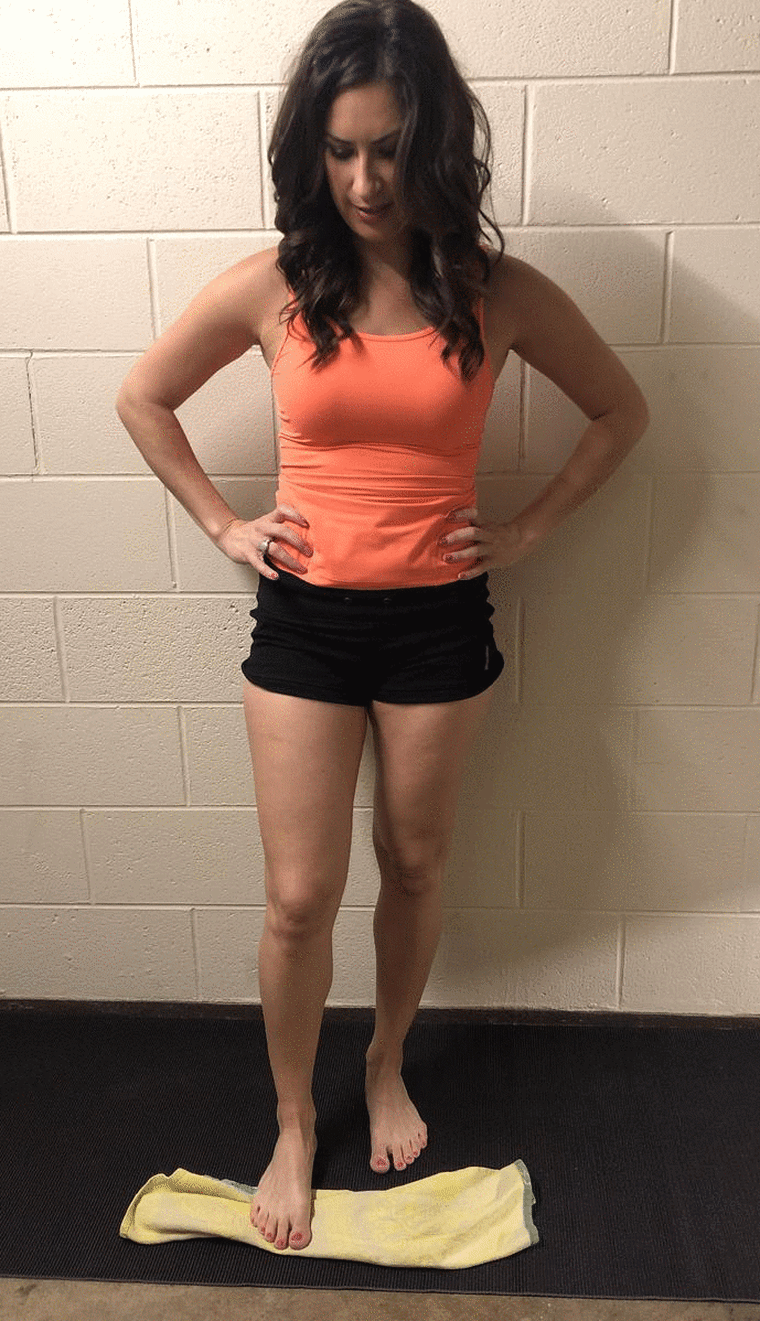
If your pain level is too high (and the bottom of your foot too tight) you can simply point and flex your toes to build strength in your foot. However, the toe towel curl is a well-known exercise to help strengthen the foot, which can help decrease pain. Just make sure to ease into it if your plantar fasciitis is flaring up. To perform, put your feet on a towel and try to grab the towel with your toes, then release it. Practice this 10 times per foot.
More stretching routines
- Tips and stretches to reduce wrist and shoulder pain when working out
- 6 exercises that improve posture and reduce back pain
- A warmup and cool-down routine for runners
- Sit all day? Try these desk stretches to loosen your hips
- 6 stretches that relieve lower back pain
Want more tips like these? NBC News BETTER is obsessed with finding easier, healthier and smarter ways to live. Sign up for our newsletter and follow us on Facebook, Twitter and Instagram.
